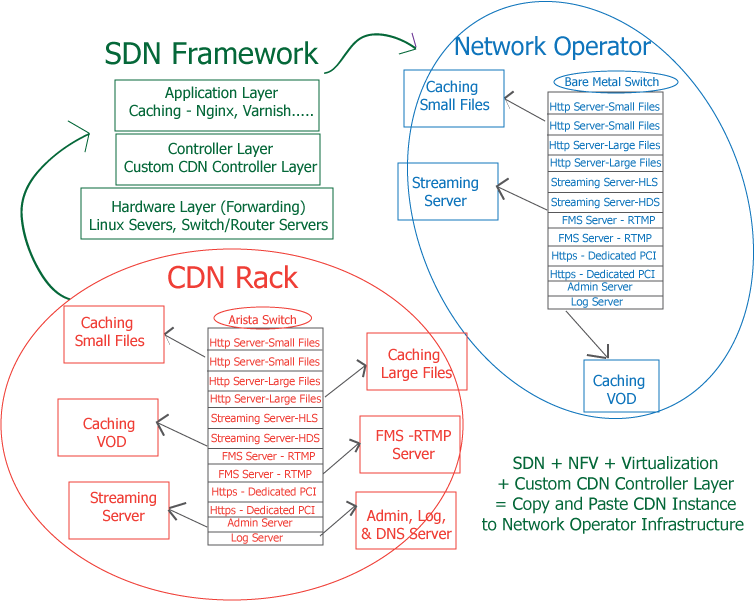Bizety is presenting the first version of the SDN CDN Framework Diagram. It’s a work in process and it will be updated regularly to reflect the latest research. The SDN Framework consist of three tiers: Application Layer, Control Plane and Forwarding Plane. The two main organizations driving the open source SDN projects are OpenDaylight and Project Floodlight. Both, as well as other open source projects provide the source code free of charge. The source code is the plumbing for SDN implementations if you will.
Therefore, CDNs don’t have to code the layers from scratch, but can use existing libraries. Regardless, CDNs have always been open source factories that are used to building applications from scratch, and SDN functionality is no exception. CDNs have vast experience building caching platforms, log systems, reporting and analytics systems, and control panels from the ground up. The CDN industry is the one sector that can help accelerate the adoption of SDN.
CDN Architecture Tidbits
- CDN architectures vary significantly between CDNs
- One CDN might have clusters of servers dedicated to small file object delivery, and other CDNs might deliver small file and large file from the same cluster of servers
- Some CDNs have clusters of servers dedicated to the delivery of Https content and/or sensitive PCI environments
- FMS servers are usually dedicated to serving only RTMP traffic
- Some CDNs use high-end storage arrays like DDN or Isilon, and others use commodity hardware
- Arista and Cisco switches are used heavily by CDNs
- Juniper routers and Cisco routers are used heavily by CDNs
- Most CDNs use ModSecurity for WAF, with the one exception being Akamai according to some rumors
- Arbor Networks DDoS appliances are used at some CDNs, and others have built their own like Incapsula
- Most start-up CDNs use commodity server hardware, but a handful use name brand server hardware


